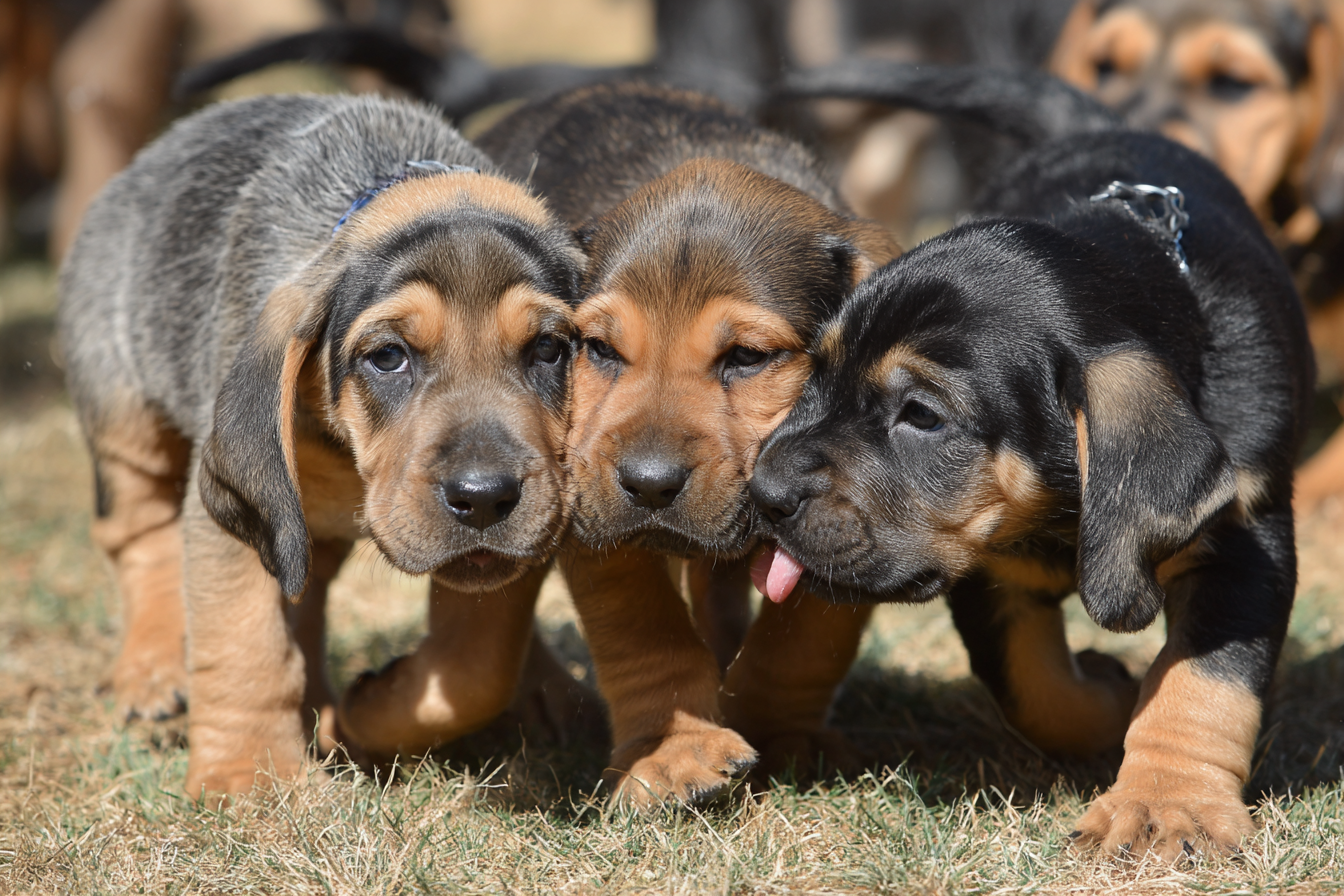Bloodhounds are renowned for their exceptional scent-tracking abilities and their gentle, affectionate nature. However, like all dogs, Bloodhounds require proper socialization to grow into well-adjusted, confident companions. Socialization helps them navigate new experiences calmly and interact positively with other dogs, animals, and people. If you want your Bloodhound to be a friendly and balanced member of your family, it’s essential to start socialization early and maintain it throughout their life. Here are some practical and effective socialization tips designed specifically for Bloodhounds.
Importance of Early Socialization
Socialization is the process by which a puppy or dog learns to interact appropriately with their environment, other animals, and people. For Bloodhounds, beginning this process during the critical socialization period between 3 and 14 weeks old can have a long-lasting positive impact on their behavior. During this time, puppies are particularly open to new experiences and less likely to develop fear or anxiety related to unfamiliar situations.
Early socialization helps Bloodhounds become confident and curious, rather than shy or overly cautious. It also prevents the development of behavioral problems like aggression, excessive barking, or separation anxiety. Because Bloodhounds are scent-driven dogs with a strong independent streak, starting socialization early helps them learn to focus on their humans and respond well to commands despite distractions.
Introducing New People and Environments
One key aspect of Bloodhound socialization is gradual exposure to a wide range of people and environments. This includes people of all ages, sizes, and appearances—children, adults, elderly individuals, people wearing hats or sunglasses, and those using mobility aids. Exposing your Bloodhound to diverse people helps minimize fear or aggression stemming from unfamiliarity.
Begin by inviting friends and family over in a calm setting so the puppy can approach at their own pace. Reward your pup with praise or treats for positive, relaxed interactions. When visiting new environments like parks, pet-friendly stores, or outdoor events, keep the puppy on a leash and allow them time to sniff and observe. Avoid overwhelming your Bloodhound by introducing one new stimulus at a time, gradually increasing complexity as they become more comfortable.
Interaction with Other Dogs and Animals
Socializing your Bloodhound with other dogs and animals is equally important. Because Bloodhounds have a strong prey drive and are scent-focused, they may initially be overly interested or distracted by other animals. Early positive experiences with well-mannered dogs and smaller pets can encourage social skills and respect for boundaries.
Organize playdates with vaccinated, friendly dogs to help your Bloodhound learn polite canine communication such as reading body language, sharing toys, and understanding bite inhibition. Puppy classes, dog parks, or obedience training sessions also offer controlled environments for social interaction. Always supervise interactions closely, especially during the early stages, to prevent overstimulation or accidental negative encounters that could cause fear or aggression.
Managing Fear and Anxiety
Because Bloodhounds are naturally sensitive to their surroundings, they may sometimes experience fear or anxiety when confronted with loud noises, unfamiliar objects, or sudden changes. Addressing these fears early and with patience is critical for preventing long-term anxiety issues.
If your Bloodhound shows signs of fear—such as cowering, trembling, or trying to hide—avoid forcing them into uncomfortable situations. Instead, use a gradual desensitization approach: introduce the fear trigger at a low intensity and pair it with positive reinforcement like treats and gentle praise. Over time, increase exposure carefully so your dog learns to associate the trigger with a positive outcome rather than stress.
Additionally, creating a calm, secure home environment with a designated safe space where your Bloodhound can retreat when overwhelmed provides comfort and supports emotional well-being.
Role of Positive Reinforcement
Positive reinforcement is a powerful tool when socializing your Bloodhound. Reward-based training builds trust, encourages good behavior, and strengthens the bond between you and your dog. Whether teaching your Bloodhound to greet a new person calmly or to stay composed around other dogs, rewards like tasty treats, praise, and play are essential motivators.
Always reinforce behaviors you want to see more of, such as sitting politely, approaching new people gently, or remaining calm in stimulating environments. Avoid punishment or harsh corrections, as Bloodhounds can be sensitive and may respond with anxiety or stubbornness instead of compliance. Consistency is key; keep socialization sessions positive, brief, and fun to encourage enthusiastic participation.
Ongoing Socialization Throughout Life
Socialization isn’t just for puppies—it’s a lifelong commitment. Even an adult Bloodhound that received early socialization benefits from continued exposure to new situations, people, and animals. Regular social activities help maintain your dog’s confidence and prevent the development of fear-based reactions over time.
Try to introduce your Bloodhound to novel experiences regularly, whether it’s new walking routes, visits to dog-friendly cafes, or meeting different dogs at training classes. Pay attention to your dog’s cues and adjust activities according to their comfort level. Ongoing socialization keeps your Bloodhound mentally stimulated and enriches their quality of life.
Helping Your Bloodhound Thrive
With their incredible scenting abilities and lovable personality, Bloodhounds make extraordinary companions. Investing time and effort into their socialization ensures they develop into friendly, confident dogs you can trust and enjoy. By starting early, using positive reinforcement, and exposing your Bloodhound gently to a variety of people, animals, and environments, you lay the foundation for a lifetime of happy experiences together.
Remember, every Bloodhound is unique and may progress at their own pace. Patience, consistency, and kindness will guide your dog smoothly through socialization and help them thrive as your loyal, well-adjusted friend.







